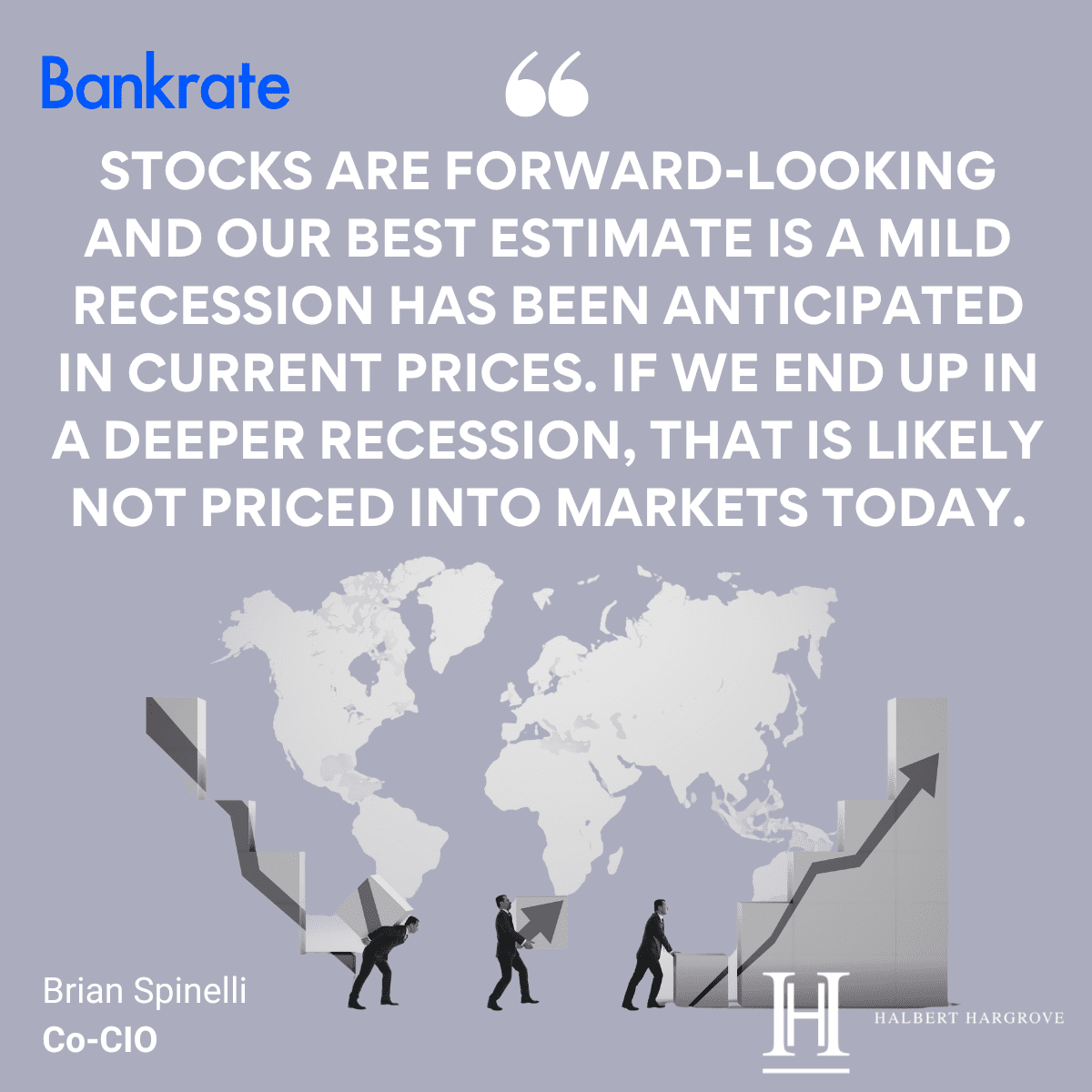By James Royal and Brian Baker, Bankrate featuring Brian Spinelli, CFP®, AIF®, Co-CIO
The Federal Reserve appears set to raise interest rates at its Jan. 31- Feb. 1 meeting after hiking rates seven times in 2022. The nation’s central bank is expected to lift the benchmark Fed funds rate by 0.25 percentage point, according to the CME FedWatch tool.
It’s likely not the last increase for this economic cycle, either. The odds are high that the Fed will raise rates at its March 2023 meeting as it attempts to get inflation – which hit 6.5 percent in December 2022, compared to a year earlier – under control.
Higher rates have been playing out on stocks, cryptocurrency and commodities such as oil over the last year. But what can investors expect from here and how long will the rising-rate environment impact markets?
Higher rates and recession fears losing effect on the market
While the Fed has already raised rates seven times during this tightening cycle, it’s easy to spot when markets really sat up and took notice that the central bank wasn’t kidding that it was about to recalibrate monetary policy. It was November 2021 when cryptocurrency and many of the riskiest stocks peaked.
“The stock market will never not worry about future interest rates,” says Steve Azoury, head of Azoury Financial in Troy, Michigan. “The cost of borrowing impacts all areas of investing, purchasing and savings. Just the anticipation of what may happen is enough to cause a stock market reaction.”
But still-rising rates seem to be frightening investors less these days, as they anticipate the Fed to stand pat in the near future.
“I think markets are far less anxious about interest rate hikes now than in Q3 and Q4 2022,” says Dan Raju, CEO of Tradier, a brokerage platform. “With the better-than-expected recent inflation numbers, the Fed and investors feel like they have some control on inflation. It seems now everyone sees a path to an eventual holding off of rate hikes.”
While major stock indexes such as the Standard & Poors 500 spent most of 2022 in a funk, equities seem to have found a floor since October. They’ve fared well to start the year, too, with the S&P 500 up more than 4 percent. The Nasdaq Composite has climbed more than 8 percent to kick off the new year.
But what about the highly expected recession? The market’s recent relative strength suggests that investors may be more optimistic – or at least, less pessimistic – than they were in 2022.
Whether a recession happens and its potential severity are major uncertainties now, says Brian Spinelli, co-chief investment officer at wealth advisor Halbert Hargrove in Long Beach, California. “Stocks are forward-looking and our best estimate is a mild recession has been anticipated in current prices. If we end up in a deeper recession, that is likely not priced into markets today.”So there may yet be plenty of room for markets to fall further if the economy worsens significantly.
“When the Fed introduced restrictive monetary policies by increasing rates in 2022, this caused equity markets and cryptocurrencies to appropriately decline in valuation,” says Octavio Sandoval, director of investments at Illumen Capital.
Unprofitable high-growth stocks had a quite rough 2022, and while prices may have firmed up recently, that doesn’t mean these stocks are anywhere close to their prior highs. For example, software stocks such as Cloudflare and Datadog are worth less than half their all-time highs.
When it comes to crypto, Bitcoin is still down more than 65 percent from its all-time high set in November 2021. The second-largest cryptocurrency Ethereum has seen a similar drop over the same period as riskier assets have struggled.
Will rising rates and inflation continue to derail stocks?
Stocks and cryptocurrency have endured notable volatility as investors have factored in rising rates. But what’s in store for the next six months, with many rate hikes already completed and perhaps a few more still in the cards?
“Cost of capital for companies is going up, there are arguably tighter lending conditions for consumers and there is still uncertainty about the level at which the Fed pauses its rate hikes to try and tame inflation,” says Spinelli.
With less money sloshing about in financial markets, that’s a net minus for investments as a whole, but investors have a notable habit of looking beyond today’s news.
“The markets appear to be pricing in a Fed pause in Q1 2023,” says Spinelli. “While the Fed is saying they are going to continue raising rates to make sure inflation is tamed, the markets are second guessing [that stance] at this point.”


